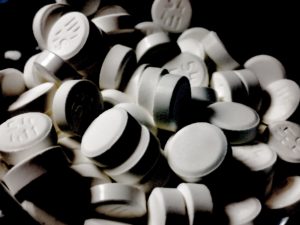From NPR:
Opioid Addiction Is ‘A Disease Of Isolation,’ So Pandemic Puts Recovery At Risk
by Martha Bebinger

Before the spreading coronavirus became a pandemic, Emma went to an Alcoholics Anonymous meeting every week in the Boston area and to another support group at her methadone clinic. She says she felt safe, secure and never judged.
“No one is thinking, ‘Oh my God, she did that?’ ” says Emma, “’cause they’ve been there.”
Now, with AA and other groups moving online, and the methadone clinic shifting to phone meetings and appointments, Emma is feeling more isolated. She’s still using heroin occasionally, which is why we’re not including her last name. Emma says the coronavirus may make it harder to stay in recovery.
“Maybe I’m old fashioned,” says Emma. “but the whole point of going to a meeting is to be around people and be social and feel connected, and I’d be totally missing that if I did it online.”
While staying home may be the safer way to avoid getting and spreading COVID-19, addiction specialists acknowledge Emma’s concern: Doing so may increase feelings of depression and anxiety among people in recovery — and those are underlying causes of drug and alcohol use and addiction.
“We consider addiction a disease of isolation,” says Dr. Marvin Seppala, chief medical officer at the Hazelden Betty Ford Foundation. “Now we’re isolating all these people and expecting them to pick up the phone, get on line, that sort of thing — and it may not work out as well.”
Emma has another frustration: If the methadone clinic isn’t allowing gatherings, why is she still required to show up daily and wait in line for her dose of the pink liquid medication?
The answer is in tangled rules regarding methadone dispensing. The federal government has loosened them during the pandemic — so that patients don’t all have to make a daily trip to the methadone clinic, even if they are sick. But patients say clinics have been slow to adopt the new rules.
Mark Parrino, president of the American Association for the Treatment of Opioid Dependence, explains that he issued guidelines to members late last week about how to operate during pandemics. He recommends clinics stop collecting urine samples to test for drug use. Many patients can now get a 14- to 28-day supply of their addiction treatment medication so they can reduce the number of trips they have to make to methadone or buprenorphine clinics.
“But there has to be caution about giving significant take-home medication to patients who are clinically unstable or actively still using other drugs,” Parrino says, “because that could lead to more problems.”
The new rules do have a downside for clinics: Programs will lose money during the pandemic as fewer patients make daily visits, although Medicare and some other providers are adjusting reimbursements based on the new stay-at-home guidelines.
And for active drug users, being alone when taking high levels of opioids increases the risk of a fatal overdose.
These are just some of the challenges that emerge as the public health crisis of addiction collides with the global pandemic of COVID-19. Doctors worry deaths will escalate unless people struggling with excessive drug and alcohol use and those in recovery — as well as addiction treatment programs — quickly change the way they do business.
But treatment options are becoming even more scarce during the pandemic.
“It’s shutting down everything,” says John, a homeless man who’s wandering the streets of Boston while he waits for a detox bed. We aren’t including John’s last name because he still buys illegal drugs. “Detoxes are closing their doors and half-way houses,” he says. “It’s really affecting people getting help.”
Continue to original article.
